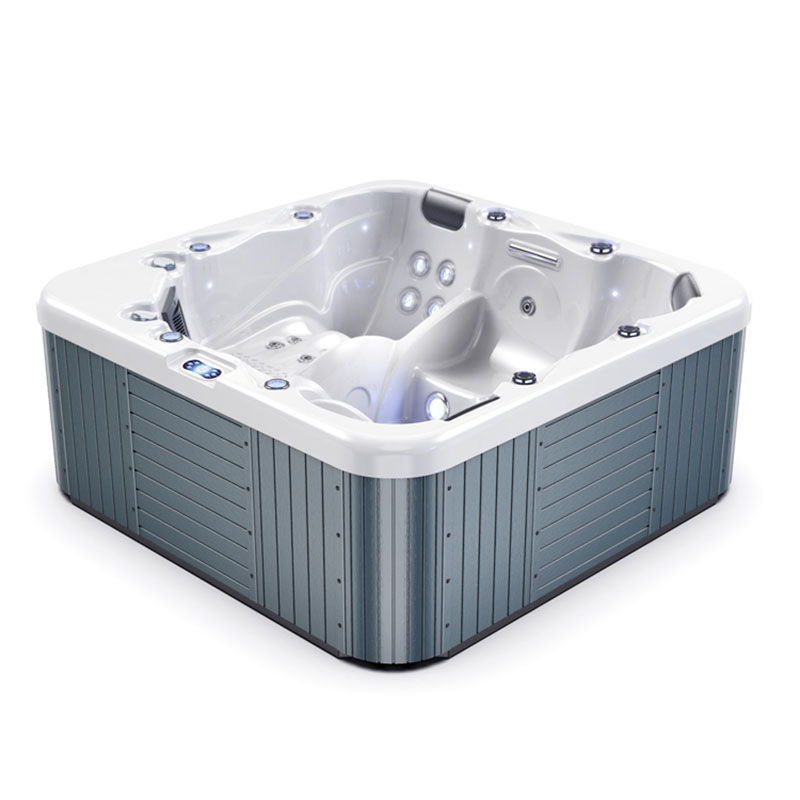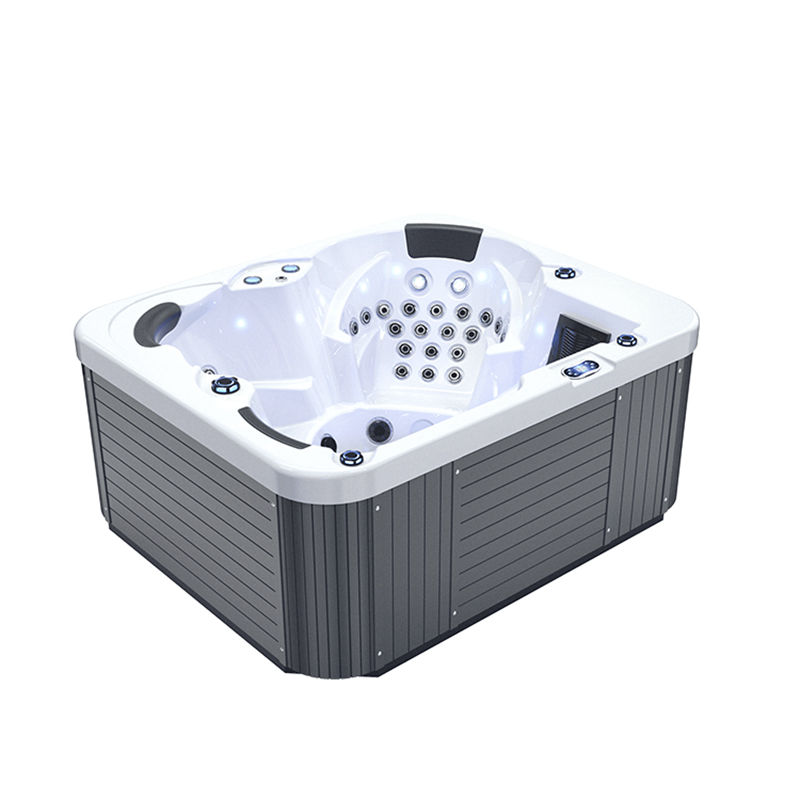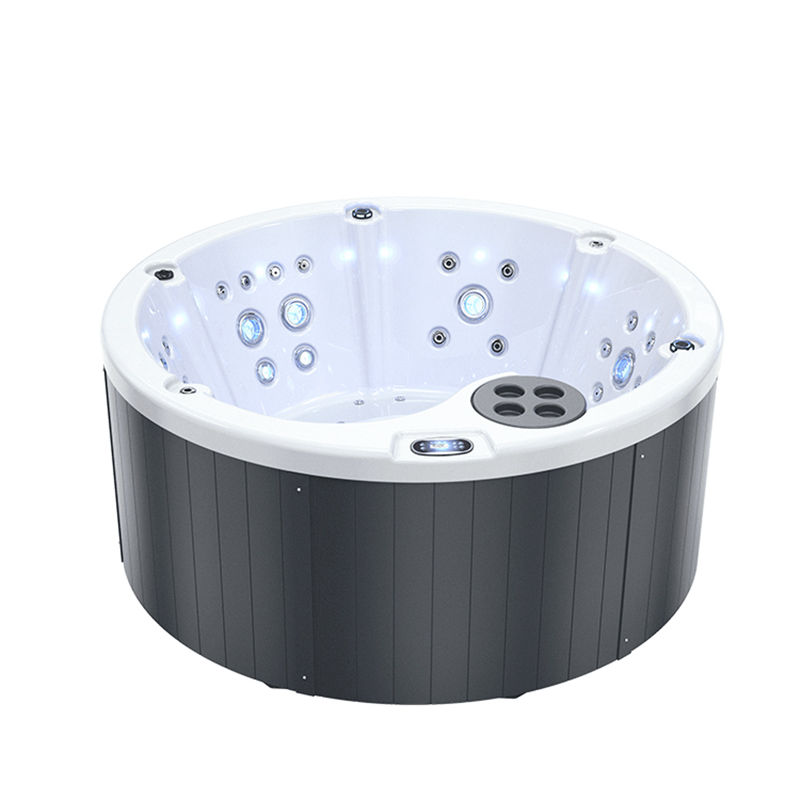Whirlpool spa hot tubs are an ideal choice for relaxation and stress relief, but heating and maintaining them remains a key concern for many users. While the question of whether to use the jets when heating a whirlpool spa hot tub may seem simple, it involves many considerations, including heating efficiency, water circulation, energy consumption, and user experience.
This article will delve into the role of the jets when heating a whirlpool spa hot tub, helping users better understand how to make the best choice in practical applications.
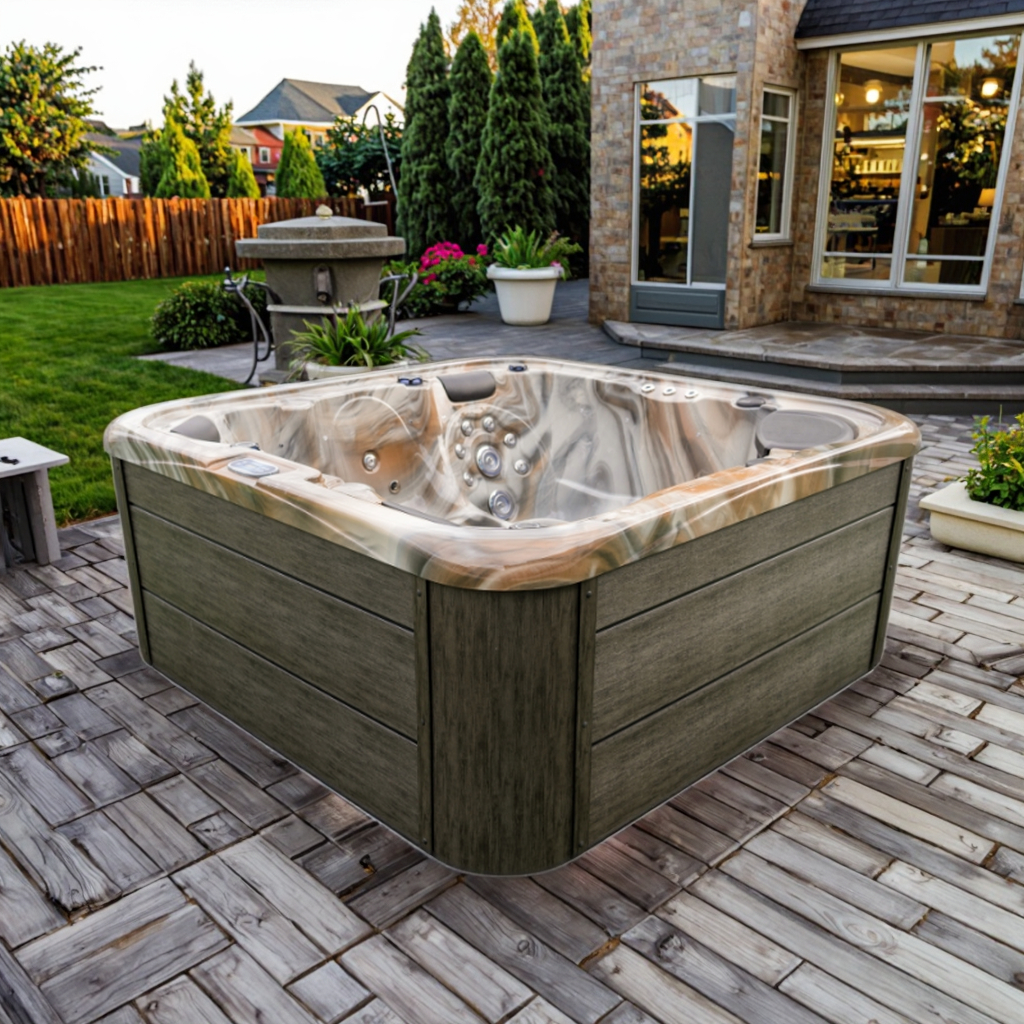
How does a whirlpool spa hot tub work?
A modern whirlpool spa hot tub typically consists of a heater, filtration system, pump, and jets.
1. Heater
The heater is responsible for heating the water to a set temperature, typically between 37°C and 40°C. The heater is powered by electricity or gas, and the heating rate depends on the size of the tub, the wattage, and the ambient temperature.
2. Pump and Jets
The pump's primary function is to circulate water within the tub, while the jets create a water massage effect by powerfully jetting a mixture of water and air. The jets are typically located around the tub's perimeter and can be turned on or off by the user.
3. Filtration System
The filtration system cleans the water, removing impurities and contaminants. The pump circulates the water through the filter, ensuring clean water quality.
During the whirlpool spa hot tub heating process, these systems must work together to achieve rapid heating and maintain water cleanliness.
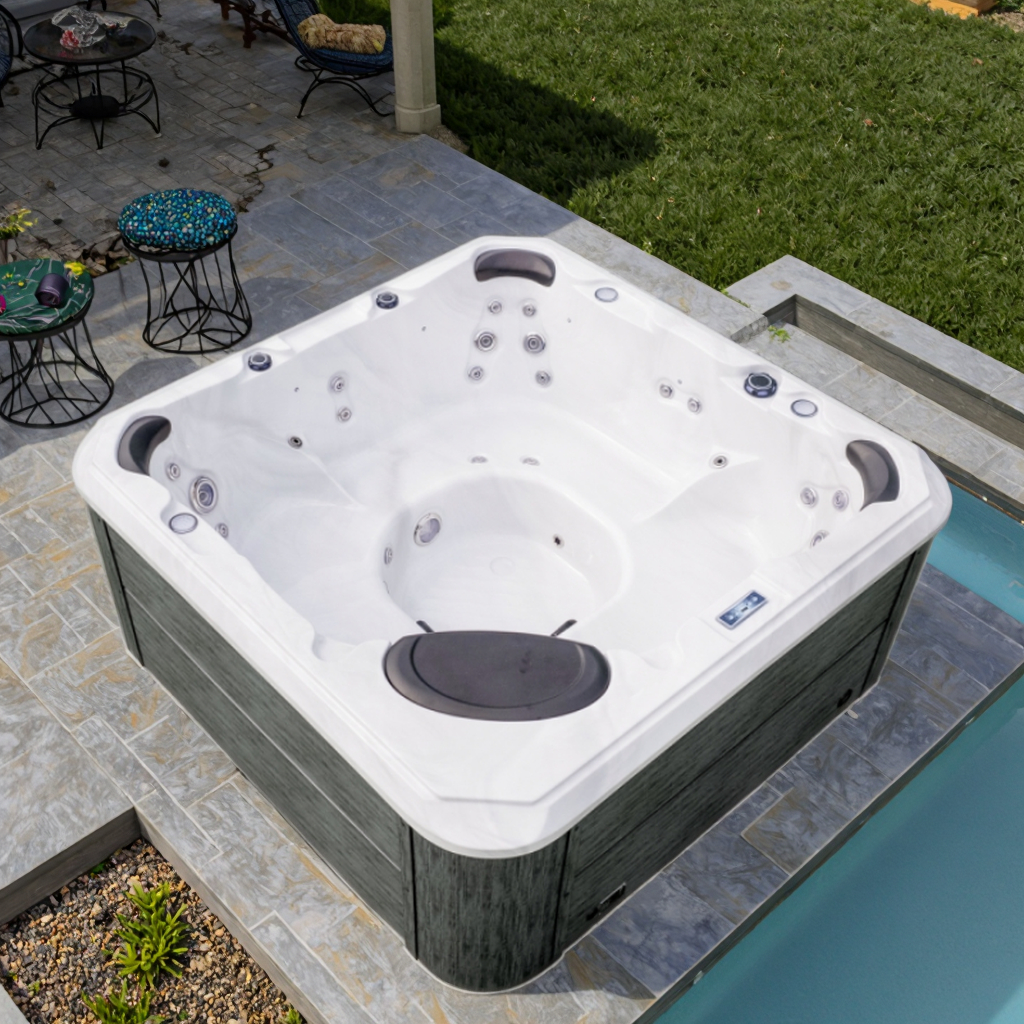
What are the functions of spa hot tub jets?
The primary function of a whirlpool spa hot tub jet is to provide a water massage, using powerful jets of water to relax muscles and stimulate blood circulation. However, in addition to this function, the jets also play a role in heating and circulating the water.
1. Accelerating Water Circulation
Jets, driven by the pump, accelerate water circulation within the whirlpool spa hot tub. When water circulation is accelerated, the water is heated more evenly by the heater, reducing uneven water temperature distribution.
2. Avoiding Spot Overheating
If jets are not used, hot water may be concentrated near the heater, while the water temperature in other areas rises more slowly, resulting in uneven water temperature. Turning on jets can help distribute hot water quickly and evenly throughout the whirlpool spa hot tub, avoiding hot spots or areas with excessively low temperatures.
3. Maintaining Water Quality
Accelerating water circulation not only helps with heating but also helps the filtration system work more efficiently. Jets push more water through the filter, reducing the accumulation of impurities in the water and maintaining water quality.
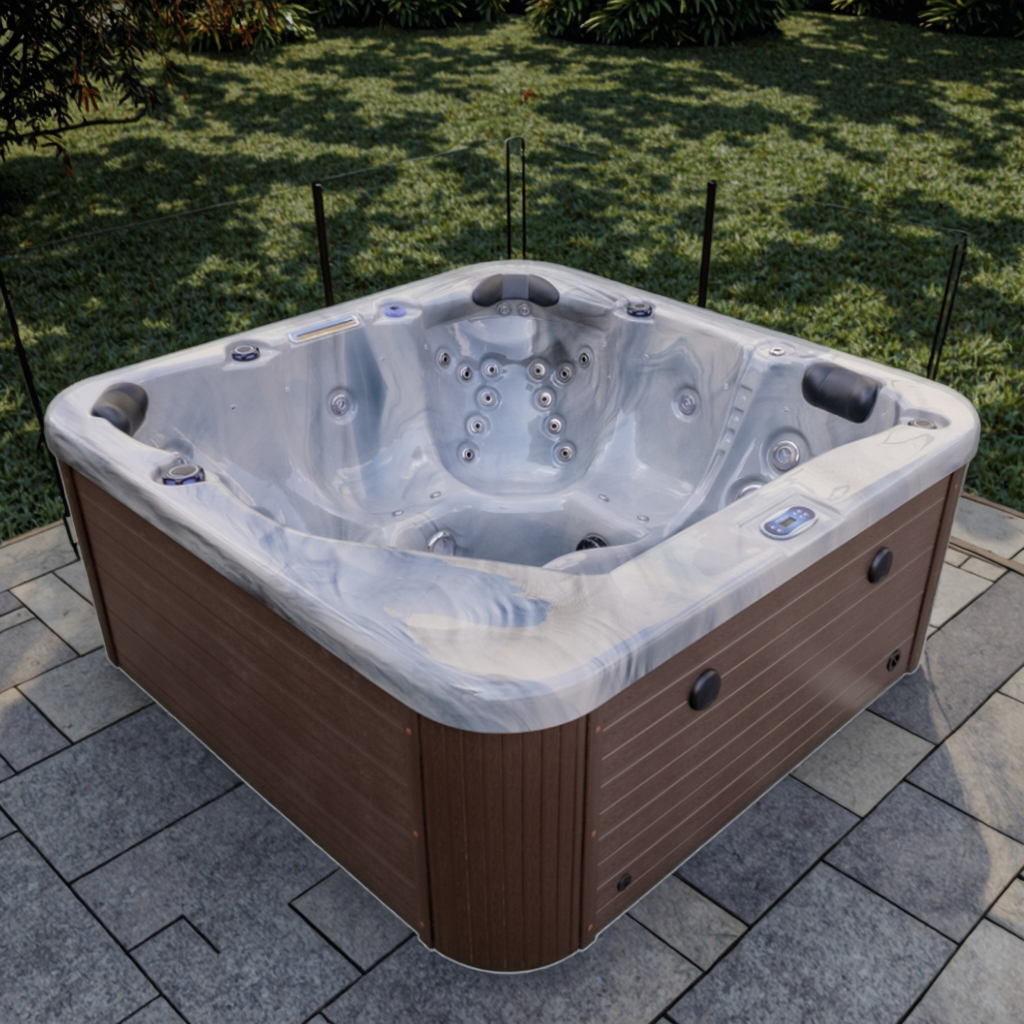
Should Jets Be Used When Heating a Spa Hot Tub?
While jets play a significant role, the answer to whether or not to use them when heating a whirlpool spa hot tub is not one-size-fits-all. To help users make a decision, we will conduct a detailed analysis based on four aspects: heating efficiency, energy consumption, water quality management, and user experience.
1. Impact of Heating Efficiency
Jets can affect the heating efficiency of a whirlpool spa hot tub to a certain extent. While turning on the jets can speed up the water circulation, it can also cause the heater to become less efficient.
(1) Effect of accelerated water flow on heating
When the jets are turned on, the water circulates faster, which helps distribute the hot water more evenly throughout the whirlpool spa hot tub. However, the accelerated water flow means that the water needs to pass through the heater more frequently. The heater typically heats each part of the water passing through it, so faster-flowing water reduces the amount of heat the heater transfers each time, potentially extending the overall heating time.
(2) Jets increase air mixing and lower water temperature
Jets typically mix air with the water when they are running, creating a massaging effect. However, the mixing of air can lower the water temperature because the air temperature is usually lower than the water temperature, especially in cold environments. This means that turning on the jets may cause the water temperature in the tub to drop, which in turn affects the heating efficiency.
Conclusion: When heating a whirlpool spa hot tub, if the user wants to quickly increase the water temperature, turning off the jets may be a better option, so that the heater can work more efficiently without being disturbed by air mixing into the water flow.
2. Impact of energy consumption
The operation of the ejector relies on the power of the water pump, which means that once the ejector is turned on, the power consumption will increase. If the user keeps the ejector on during the entire heating process, the energy consumption may increase significantly.
(1) Power consumption of the water pump
The water pump is the core driving device for the operation of the ejector. When the water pump power is high, the power consumption also increases accordingly. If the ejector is always kept on during the heating process, not only the heater is working, but the water pump will also be running all the time, resulting in an increase in electricity bills.
(2) Extension of heating time
As mentioned above, turning on the ejector may reduce the efficiency of the heater and extend the heating time, which will indirectly increase energy consumption. The longer the heater works, the greater the power consumption, and the user may face higher electricity bills.
Conclusion: If the user wants to reduce energy consumption, it is recommended to turn off the ejector during the heating process. This can reduce the running time of the water pump and improve the heating efficiency, thereby reducing overall energy consumption.
3. Considerations for water quality management
Water quality is an important part of the daily maintenance of whirlpool spa hot tubs. Keeping water clean is not only related to the health of users, but also determines the service life of the equipment.
(1) The jet promotes water circulation and improves filtration efficiency
Turning on the whirlpool spa hot tub jet can speed up water circulation, which helps the filtration system to operate more efficiently. The fast-circulating water will pass through the filter, remove impurities and pollutants in the water, and keep the water clean.
(2) Closing the jet may cause poor water flow
If the jet is completely closed during the heating process, the circulation of water may slow down, resulting in a decrease in filtration efficiency and the water quality may be affected. This is especially important during long-term use or when the heating time is long.
Conclusion: In order to maintain the cleanliness of water quality, it is recommended to open the jet at an appropriate time during the heating process to promote water circulation and the work of the filtration system, but it does not need to be turned on for a long time to balance heating efficiency and water quality management.
4. Impact of user experience
Although it is not necessary to use the massage function of the jet during heating, many users want to enjoy the massage experience before the water temperature reaches the ideal value.
(1) Experience water massage in advance
For some users, the jet is not only used to enjoy the massage effect after heating. Using the jet during the heating process can experience the comfort of water massage in advance, especially when the water temperature has not yet fully heated up, the massage can provide a certain relaxation effect for the body.
(2) Noise problem
When the jet is turned on, the operation of the water pump is usually accompanied by a certain amount of noise. If the user has high requirements for a quiet environment, turning off the jet during heating can reduce noise interference.
Conclusion: Users can choose whether to turn on the jet according to their personal comfort needs. If you pay more attention to heating efficiency and a quiet environment, you can choose to turn off the jet; if you want to enjoy a massage experience during the heating process, you can turn on the jet at the right time.
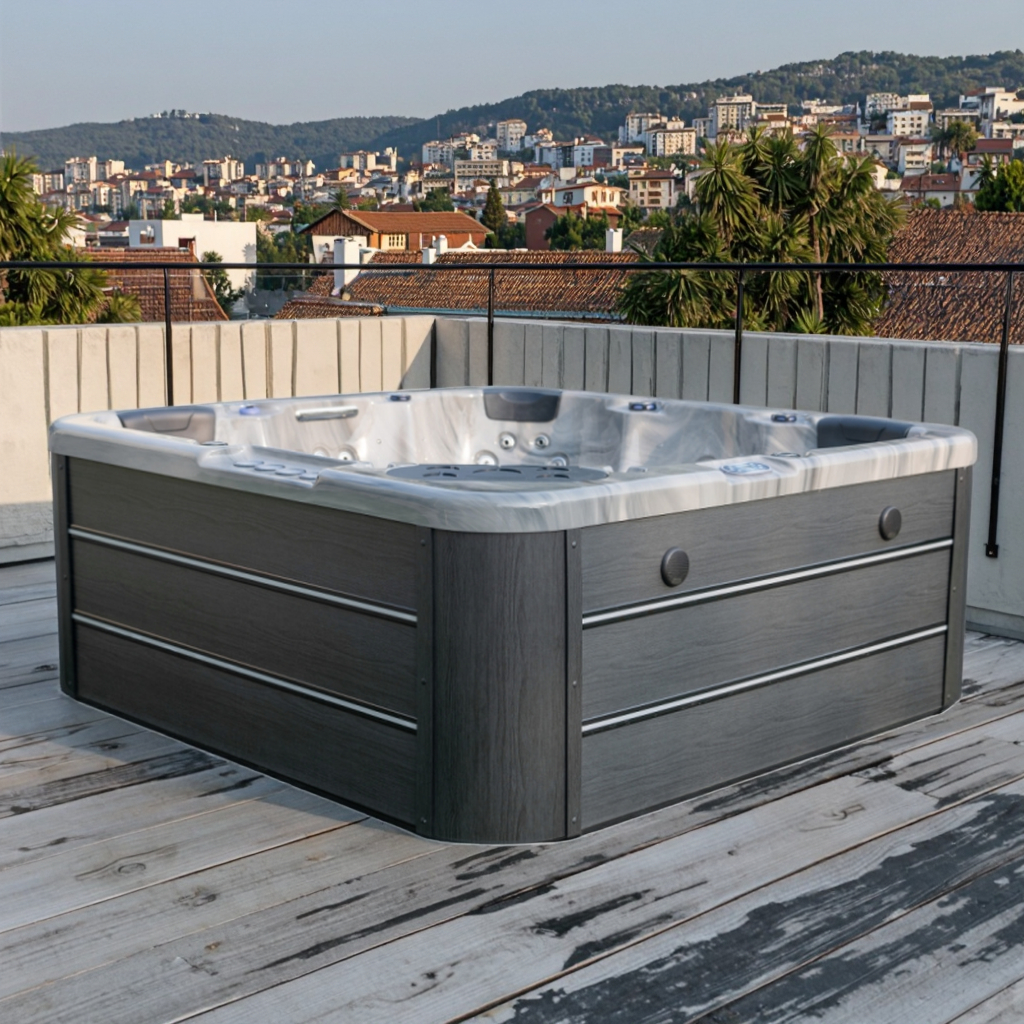
How to use the jet when heating a spa hot tub?
After comprehensively considering factors such as heating efficiency, energy consumption, water quality management and user experience, the following are some suggestions on how to use the jet when heating a whirlpool spa hot tub:
1. Turn off the jet at the initial heating stage
It is recommended to turn off the jet during the initial heating stage of the whirlpool spa hot tub. During this phase, the water temperature is lower, and air intrusion can cause the water temperature to drop. Therefore, turning off the jets can help the heater operate more efficiently and shorten heating time.
2. Turn on the jets appropriately when the water temperature approaches the desired temperature
When the water temperature approaches the target temperature, turn on the jets appropriately to promote water circulation and ensure even distribution of hot water throughout the whirlpool spa hot tub. This not only helps prevent overheating but also improves water quality management.
3. Turn on the jets for a short period of time
If you need to maintain clean water quality during the heating process, you can turn on the jets briefly to promote water circulation and then turn them off again. This maintains water quality while reducing energy consumption.
4. Adjust according to personal needs
Ultimately, the use of the jets should be adjusted according to personal needs. If you prefer a massage function, you can turn on the jets. If you are more concerned about heating speed and energy consumption, you can turn them off.
What payment terms do you offer for international orders?
Our standard payment terms are T/T 30% in advance to confirm your order, and the remaining 70% before delivery. We are also open to discussing flexible terms for large-scale buyers or long-term cooperation.
As a professional spa manufacturer and exporter, we understand international trade practices and provide detailed proforma invoices and shipping documents. With stable pricing and professional service, we make the purchasing process efficient for both new and returning clients.


